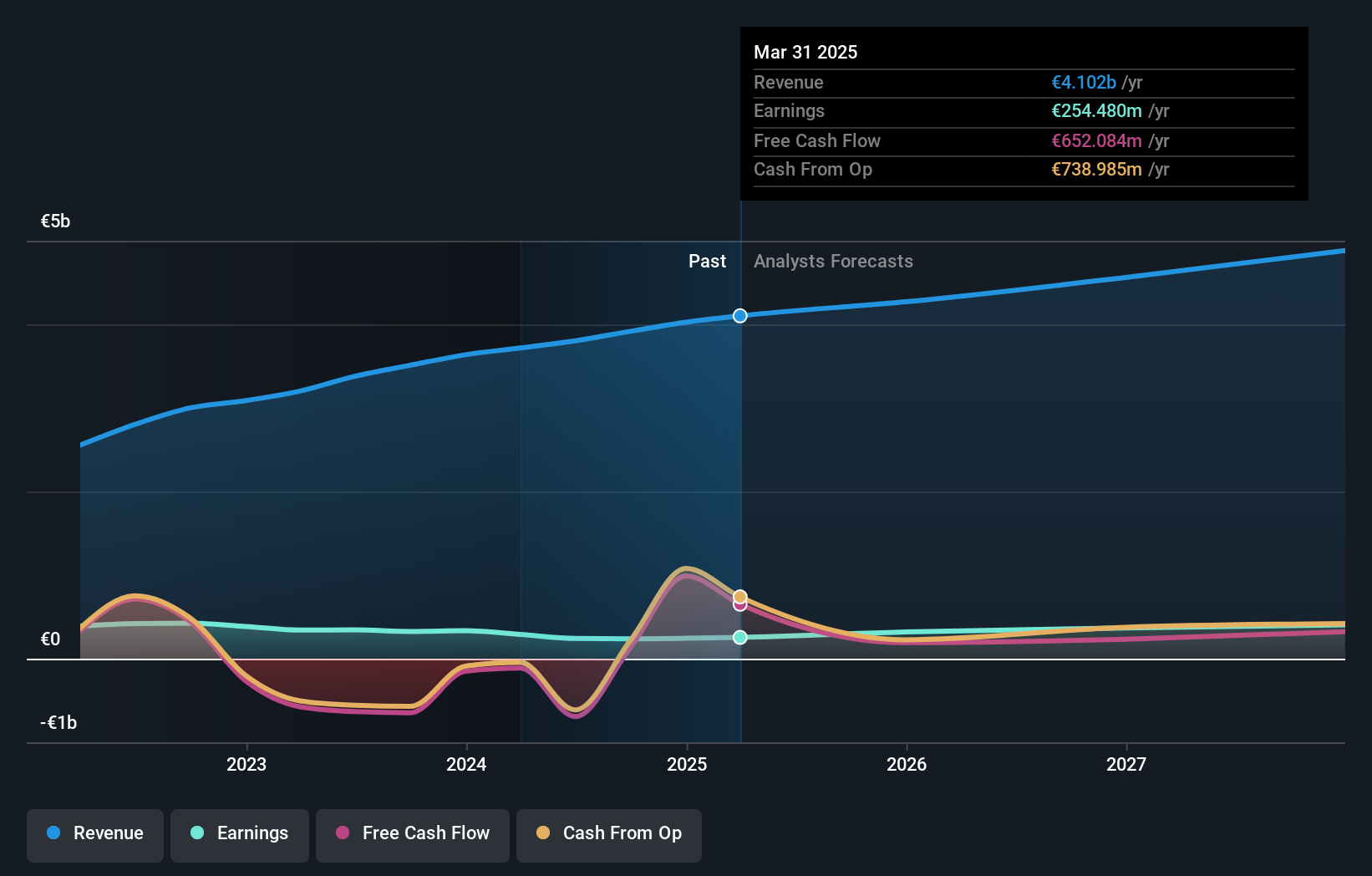- Germany
- /
- Transportation
- /
- XTRA:SIX2
Sixt SE's (ETR:SIX2) last week's 9.8% decline must have disappointed individual investors who have a significant stake
Key Insights
- Significant control over Sixt by individual investors implies that the general public has more power to influence management and governance-related decisions
- The top 6 shareholders own 50% of the company
- 21% of Sixt is held by Institutions
A look at the shareholders of Sixt SE (ETR:SIX2) can tell us which group is most powerful. We can see that individual investors own the lion's share in the company with 41% ownership. Put another way, the group faces the maximum upside potential (or downside risk).
As market cap fell to €3.7b last week, individual investors would have faced the highest losses than any other shareholder groups of the company.
Let's delve deeper into each type of owner of Sixt, beginning with the chart below.
Check out our latest analysis for Sixt

What Does The Institutional Ownership Tell Us About Sixt?
Many institutions measure their performance against an index that approximates the local market. So they usually pay more attention to companies that are included in major indices.
We can see that Sixt does have institutional investors; and they hold a good portion of the company's stock. This implies the analysts working for those institutions have looked at the stock and they like it. But just like anyone else, they could be wrong. If multiple institutions change their view on a stock at the same time, you could see the share price drop fast. It's therefore worth looking at Sixt's earnings history below. Of course, the future is what really matters.

Hedge funds don't have many shares in Sixt. Our data shows that Asv Verwaltungs GmbH & Co. Grundbesitz Vermietungs KG is the largest shareholder with 38% of shares outstanding. Union Asset Management Holding AG is the second largest shareholder owning 5.2% of common stock, and The Vanguard Group, Inc. holds about 2.5% of the company stock.
On further inspection, we found that more than half the company's shares are owned by the top 6 shareholders, suggesting that the interests of the larger shareholders are balanced out to an extent by the smaller ones.
Researching institutional ownership is a good way to gauge and filter a stock's expected performance. The same can be achieved by studying analyst sentiments. There are plenty of analysts covering the stock, so it might be worth seeing what they are forecasting, too.
Insider Ownership Of Sixt
The definition of company insiders can be subjective and does vary between jurisdictions. Our data reflects individual insiders, capturing board members at the very least. The company management answer to the board and the latter should represent the interests of shareholders. Notably, sometimes top-level managers are on the board themselves.
Most consider insider ownership a positive because it can indicate the board is well aligned with other shareholders. However, on some occasions too much power is concentrated within this group.
We note our data does not show any board members holding shares, personally. Given we are not picking up on insider ownership, we may have missing data. Therefore, it would be interesting to assess the CEO compensation and tenure, here.
General Public Ownership
With a 41% ownership, the general public, mostly comprising of individual investors, have some degree of sway over Sixt. This size of ownership, while considerable, may not be enough to change company policy if the decision is not in sync with other large shareholders.
Private Company Ownership
It seems that Private Companies own 38%, of the Sixt stock. Private companies may be related parties. Sometimes insiders have an interest in a public company through a holding in a private company, rather than in their own capacity as an individual. While it's hard to draw any broad stroke conclusions, it is worth noting as an area for further research.
Next Steps:
While it is well worth considering the different groups that own a company, there are other factors that are even more important. Case in point: We've spotted 2 warning signs for Sixt you should be aware of.
But ultimately it is the future, not the past, that will determine how well the owners of this business will do. Therefore we think it advisable to take a look at this free report showing whether analysts are predicting a brighter future.
NB: Figures in this article are calculated using data from the last twelve months, which refer to the 12-month period ending on the last date of the month the financial statement is dated. This may not be consistent with full year annual report figures.
New: Manage All Your Stock Portfolios in One Place
We've created the ultimate portfolio companion for stock investors, and it's free.
• Connect an unlimited number of Portfolios and see your total in one currency
• Be alerted to new Warning Signs or Risks via email or mobile
• Track the Fair Value of your stocks
Have feedback on this article? Concerned about the content? Get in touch with us directly. Alternatively, email editorial-team (at) simplywallst.com.
This article by Simply Wall St is general in nature. We provide commentary based on historical data and analyst forecasts only using an unbiased methodology and our articles are not intended to be financial advice. It does not constitute a recommendation to buy or sell any stock, and does not take account of your objectives, or your financial situation. We aim to bring you long-term focused analysis driven by fundamental data. Note that our analysis may not factor in the latest price-sensitive company announcements or qualitative material. Simply Wall St has no position in any stocks mentioned.
About XTRA:SIX2
Sixt
Through its subsidiaries, provides mobility services through corporate and franchise branch network for private and business customers.
Proven track record with adequate balance sheet and pays a dividend.
Similar Companies
Market Insights
Community Narratives





